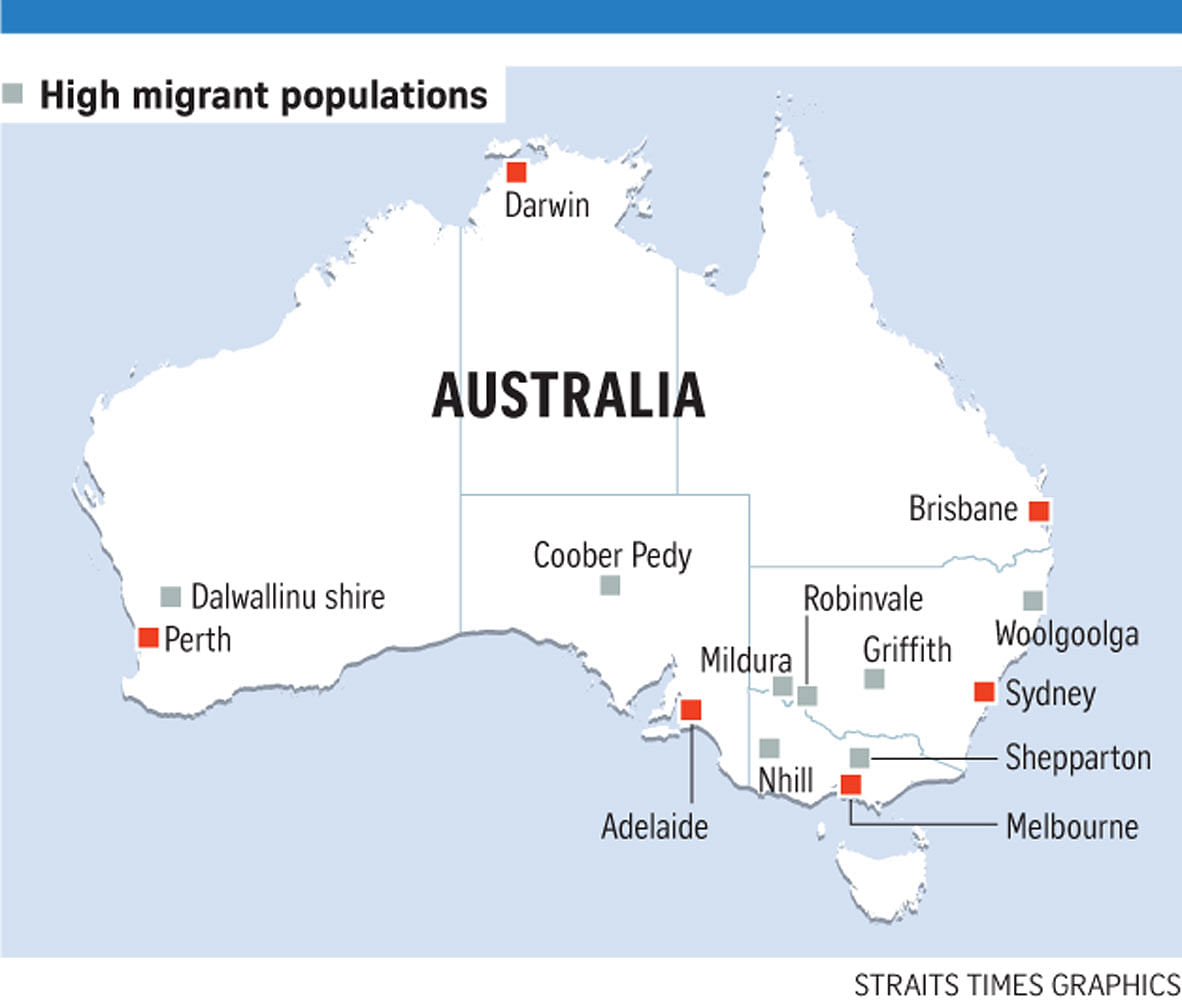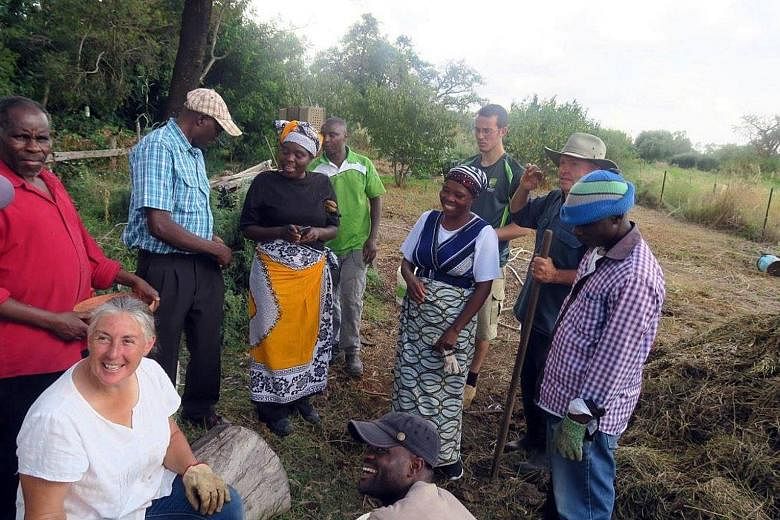On a small patch of land in the farming region of Sunraysia, in south-east Australia - an area known for its grapes and oranges - stands an unfamiliar crop being grown by a somewhat unlikely group of farmers.
The less than one hectare field of maize is being grown by migrants who moved to Australia from the landlocked country of Burundi, in central Africa. Mainly refugees, they are farming on land donated by a local community group in the regional city of Mildura. Farmers have welcomed the effort to make use of "dead land" ravaged by drought.
"It gives us a sense of belonging," a Burundi migrant, Mr John Niyera, told ABC's Landline programme earlier this year. "We are producing, and sharing our knowledge."
Such encounters - between new arrivals and local farming communities - are becoming increasingly common in Australia.
In recent years, migrants have come to the rescue of many small towns across the country, helping to prevent long-term decline in the rural population. Often, they are warmly received by local councils and community leaders keen to promote growth and fill jobs.
An analysis of the recently released 2016 census results found that 151 - or about 36 per cent - of regional government areas across the country have helped to offset local population decline by attracting international migrants.
According to the analysis, by the non-governmental Regional Australia Institute, only 20 areas - less than 5 per cent - increased their Australian-born population but had a decrease in their migrant numbers since the previous census in 2011.
"For many small towns, international migrants have been their only source of population growth," said the analysis, released last month. "While there are challenges in attracting and retaining migrants in regional areas, international migrants are a vital asset for building local economies and community. They can plug skill shortages and gaps in regional areas, including essential positions such as doctors and nurses."
The influx of foreigners to small towns has long been a part of Australia. Frequently, the names and types of businesses tell the story of Australia's migration. Old Greek cafes, Italian pizza parlours and Chinese restaurants have more recently been joined by Thai takeaway outlets, Vietnamese bakeries, and Lebanese and Turkish kebab shops.

But most migrants to Australia - more than 80 per cent - have tended, and continue, to flock to major cities. This is partly due to generally higher employment levels in cities as well as the increased prospects of living with family members, friends and others who speak their language.
At the same time, many small towns have long struggled to keep locals, especially young people, from moving to the cities for jobs and opportunities.
To try to boost small towns and rural communities, the federal government has been pushing, since 2004, to resettle migrants in regional areas. This has included incentives to skilled visa applicants who move to regional areas. Local communities have also set up their own programmes to attract foreigners for specific industries or jobs.
Some regions have actively welcomed them as a way to address labour shortages and shrinking numbers. In Dalwallinu, a sheep and wheat farming shire in Western Australia, locals set up schemes to teach English and run community events to help welcome foreigners. According to a Regional Australia Institute report last year, the remote area has attracted about 200 residents from abroad, including those from Singapore, Sri Lanka, Vietnam, Britain, the Philippines, India, Thailand and China. These include nurses, mechanics and retail workers.
An expert on environmental change and migration, Dr Olivia Dun from the University of Melbourne, who has been studying the Burundi project, said it showed that migrants could bring in fresh skills to farming areas. She said there has been growing demand in the area for locally produced organic crops, which suited the traditional Burundi approach to farming.
"Among migrants, there might be some who have farming backgrounds and skills to offer," she told The Straits Times. "A lot are hidden because they don't have access to land or they are not asked about what knowledge they have."
Dr Dun has been studying the agricultural knowledge of migrants in the town of Mildura - which houses the Burundi farm - as well as the small town of Robinvale, which has a large number of residents from Tonga and Vietnam.
"My sense is that the Sunraysia region is very welcoming of people from different backgrounds," she said. "It is quite an impressive multicultural mix of people working on farms. There is a sense that Robinvale and Mildura are welcoming places - growing food is a cultural connector."


